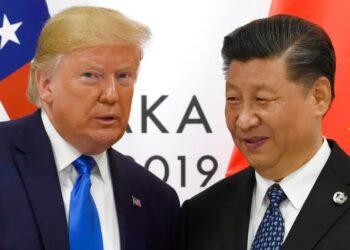Reuters recently did an analysis of shipping data that sheds additional light on the successful deception.
Using data from IHS Fairplay, a ship tracking group that uses ship registration documents from various sources, and Reuters Freight Fundamentals Database, which compiles location data from every ship’s Automatic Identification System, Reuters reports that 130 of the 144 banned ships in IRISL’s fleet continue to call at many of the world’s major ports hidden behind a web of shell companies and diverse ownership.
The data show that in the 40 months since the US sanctions began in September 2008 there have been at least 878 changes to its fleet structure, including 157 name changes, 94 changes of flag, 122 changes of operator, and 127 changes of registered ownership.
Hugh Griffiths of the Stockholm International Peace Research Institute says what’s unique about those changes is their pace and scale.
Normally a ship’s name or flag changes when its owner sells it after a decade or so. “In the Iranian case, none of these apply because it’s not based on the normal commercial reasons you’d expect,” he said. “Nothing on this scale has ever been seen before in recent history.”
The ships Parmis and Valili, for example, operate under the flag not of Iran but of Barbados and Malta, respectively. On paper they are no longer part of IRISL, having changed owners, operators and flag in the past couple of years.
But a unique seven-figure “IMO number” issued to each known ship in the world for its entire lifespan reveals the identity of each ship as a sanctioned vessel ultimately owned by the Iranian cargo line. The brightly painted IRISL containers sitting on the ships’ decks add to the impression that the ships are still Iranian.
“They certainly don’t work too hard to disguise themselves here,” said the owner of a tanker management company in Singapore.
As far back as late 2010, according to a report from a Middle Eastern intelligence agency, which was confirmed to Reuters by European diplomats, an Iranian committee boasted that the West had only discovered half of the shell companies and front individuals it used to hide its trading empire; the sanctions were seen as “harmless in Asian countries.”
In every port a ship visits, it needs someone on the ground to sort out its paperwork and organize its cargo. In Singapore that used to be done for Iranian vessels by IRISL’s regional office, Asia Marine Network, which was placed under financial sanctions by the United States in 2008.
A June 2011 indictment by the Manhattan District Attorney, Cyrus Vance, alleges that IRISL’s Singapore head, Alireza Ghezelayagh, and Singaporean businessman Cheong Kheng Guan tried to get round those sanctions, in particular a ban on any US dollar transfers by IRISL.
The two men were among five people and 11 companies in three countries named in the 317-count indictment that charged IRISL and its agents with illegal use of banks in Manhattan. The companies were said to have “deceived Manhattan banks into processing more than $60 million worth of payments using aliases or corporate alter egos to hide their conduct.”
Not everyone agrees with Washington’s claims that IRISL is still in charge of ships that visit Singapore. When Singapore’s High Court Sheriff seized three IRISL ships in September 2010 for failing to meet their credit arrangements, the court considered whether Singapore should, under UN sanctions, continue to hold the ships even after the payments were made.
The city-state is clear on its attitude to sanctions: it will implement those agreed on by the United Nations, but will not take any unilateral action or subscribe to those issued unilaterally by the United States or European Union.
The UN embargo orders that IRISL assets be frozen, including those of “any person or entity acting on their behalf or at their direction, and to entities owned or controlled by them.”
But the judge in the 2010 case, Justice Quentin Loh, decided that the UN sanctions target specific IRISL entities such as IRISL Benelux, and not the three companies listed as the owners of the ships. He also ruled that even if UN sanctions did apply, they did not imply that commercial assets such as ships should be seized. Singapore released the vessels.
Reuters Freight Fundamentals shows that Singapore has received at least 150 visits by 83 ships believed to be IRISL-linked over the past two years.
And it’s not just Singapore. Twenty-three sanctioned Iranian ships have visited 12 EU ports since July 2010, when the EU imposed its own first sanctions on IRISL, including 96 stop-offs in Malta, 14 visits to Antwerp and 10 to Rotterdam.
As well, 48 Iran-linked ships sail under the flag of Malta and 12 under that of Cyprus.
Despite being a member of the European Union, the island state of Malta not only supplies flagging services to IRISL ships, but is also home to 24 shell companies that help conceal Iran’s ownership of vessels.























